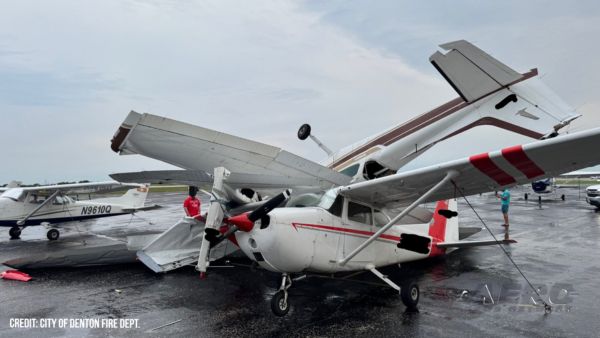Sun, Jul 14, 2013
New Helicopter Is 18 Months From Frontline Service
The U.K. Royal Navy's Five Fleet Air Arm pilots and observers are currently undergoing conversion training at the new Wildcat Training Center at Royal Naval Air Station (RNAS) Yeovilton, with the helicopter – successor to the Lynx – just 18 months away from front line service. From the beginning of 2015, Wildcats will begin to relieve the Lynx as the mainstay of helicopter operations for all of the Royal Navy’s Type 45 destroyers and some of its Type 23 frigates, as well as any other air missions the fleet requires of it.

700W – ‘W’ for Wildcat – Naval Air Squadron (700W NAS), based at RNAS Yeovilton in Somerset, got its first naval version of the new helicopter on 1 May 2013.
The squadron has been formed especially to bring Wildcat into front line service – squeezing every last ounce of information out of the helicopter so they can share it with the rest of the Wildcat world. Last month 700W NAS took the naval Wildcat to sea for the first time, carrying out deck landings on Royal Fleet Auxiliary vessel Mounts Bay off the south coast off England.
Its personnel – 5 pilots, 6 observers (who act as navigators/weapons systems specialists) and 44 ground crew and technicians – are also developing the tactics which will allow Wildcat to track drug-runners, intercept pirates, take out small surface targets, sink submarines and save lives in mid-ocean rescues; basically everything its predecessor Lynx does, only better.
“We often hear ‘it looks like a Lynx, how different can it be?’ Well yes, from the outside it bears a striking resemblance to the Lynx, but that really is where the similarity ends," said Wildcat pilot Lieutenant James Woods. "In Wildcat the Fleet Air Arm is getting a world-leading naval helicopter that builds upon the successes of the present-day Lynx. It’s bristling with the latest advanced mission systems and weapons – it’s the perfect solution to allow the Royal Navy to meet the challenges of tomorrow.”

The initial training was conducted by AgustaWestland. Now they’re passing on that experience to existing trained aircrews. And, from early 2015, the Fleet Air Arm will take rookie fliers straight from ‘helicopter school’ at RAF Shawbury and turn them into Wildcat pilots and crew.
The helicopter will take part in the Joint Warrior war games off Scotland for the first time this fall. The Fleet Air Arm is buying 28 Wildcats and the Army Air Corps is receiving 34. The maritime variant will be fitted with the SELEX Galileo Seaspray 7000E active electronically scanned array radar system for maritime surveillance missions. All will be based at Yeovilton.
The last Lynx will be withdrawn from service in the spring of 2017.
(Images provided by the U.K. MoD.)
More News
Global Navigation Satellite System (GNSS) GNSS refers collectively to the worldwide positioning, navigation, and timing determination capability available from one or more satellit>[...]
Aero Linx: ShortWingPipers.Org "The mission of ShortWingPipers.Org is to provide an international on-line source of information and communication for owners and enthusiasts of Shor>[...]
“This finding by Perseverance, launched under President Trump in his first term, is the closest we have ever come to discovering life on Mars. The identification of a potenti>[...]
Dave Juwel's Aviation Marketing Stories ITBOA BNITBOB ... what does that mean? It's not gibberish, it's a lengthy acronym for "In The Business Of Aviation ... But Not In The Busine>[...]
Also: Commercial A/C Certification, GMR Adds More Bell 429s, Helo Denial, John “Lucky” Luckadoo Flies West CAF’s Col. Mark Novak has accumulated more than 1,000 f>[...]
 ANN's Daily Aero-Term (09.11.25): Global Navigation Satellite System (GNSS)
ANN's Daily Aero-Term (09.11.25): Global Navigation Satellite System (GNSS) ANN's Daily Aero-Linx (09.11.25)
ANN's Daily Aero-Linx (09.11.25) Aero-News: Quote of the Day (09.11.25)
Aero-News: Quote of the Day (09.11.25) Aero-FAQ: Dave Juwel's Aviation Marketing Stories -- ITBOA BNITBOB
Aero-FAQ: Dave Juwel's Aviation Marketing Stories -- ITBOA BNITBOB Airborne 09.10.25: 1000 Hr B29 Pilot, Airplane Pile-Up, Haitian Restrictions
Airborne 09.10.25: 1000 Hr B29 Pilot, Airplane Pile-Up, Haitian Restrictions




